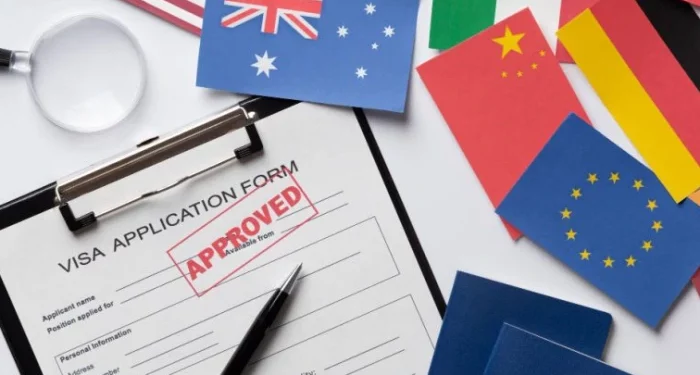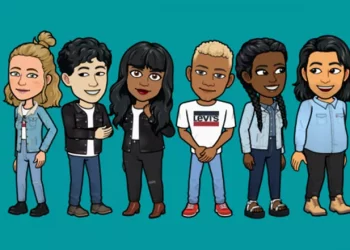Australia attracts people from all over the world for various reasons, such as tourism, work, study, and family visits. A temporary resident visa is a key document that allows individuals to enter and stay in Australia for a specific, limited period. This type of visa is distinct from a permanent residency visa, as it has a set expiration date. Understanding the ins and outs of Australian temporary resident visas is crucial for anyone planning to visit or live in Australia for a short – to – medium – term duration.
What Is A Temporary Resident Visa for Australia?
A Temporary Resident Visa (TRV) for Australia allows foreign nationals to stay in Australia for a specific period under certain conditions, depending on the purpose of their visit. These visas are typically issued for work, study, tourism, or family visits, and do not lead directly to permanent residency.
Types of Temporary Resident Visas
Tourist Visas (Subclass 600)
Purpose and Eligibility
The Tourist Visa (Subclass 600) is one of the most common temporary resident visas. It is designed for people who want to visit Australia for tourism, to visit friends or relatives, or for business visitor activities like attending meetings or conferences. To be eligible, you generally need to show that you have strong ties to your home country, such as a stable job, property, or family. For example, a businessperson from the United States who wants to attend a trade show in Sydney may apply for this visa. They would need to provide evidence of their employment in the US, like a letter from their employer stating their job responsibilities and the expected return date.
Duration and Conditions
The duration of a Subclass 600 visa can vary. It can be issued for a single – entry or multiple – entry visit. The length of stay can range from a few months to up to 12 months in some cases. However, the exact duration is determined by the Australian Department of Home Affairs based on your application. Some common conditions include not being allowed to work in Australia (except for very limited business visitor activities), and you must leave Australia before the visa expires.
Student Visas (Subclass 500)
Study – Related Requirements
The Student Visa (Subclass 500) is for those who wish to study in Australia. To be eligible, you need to have an offer of a place in an Australian educational institution. This could be a university, a vocational training college, or a language school. For instance, an Indian student who has been accepted into an Australian university for a bachelor’s degree program would apply for this visa. They must also meet the English language requirements, which usually involve taking an approved English test like IELTS or TOEFL.
Work Rights and Conditions
Students on a Subclass 500 visa are generally allowed to work part – time while studying. During the academic semester, the work limit is usually 40 hours per fortnight. However, during semester breaks, they can work full – time. But they must maintain their student status, which means attending classes regularly and meeting the academic requirements of their course. The visa is valid for the duration of the course, plus a little extra time to allow for travel arrangements after completion.
Work Visas
Skilled Work Visas (Subclass 482 – Temporary Skill Shortage Visa)
The Subclass 482 Temporary Skill Shortage Visa is for skilled workers who have a job offer from an Australian employer. The employer must first be approved to sponsor workers and prove that they cannot find a suitable Australian citizen or permanent resident for the job. For example, a software engineer from India with expertise in a particular programming language may be offered a job by an Australian IT company. The company would need to show that the skills the engineer has are in short supply in the Australian labor market.
Sub – Categories
There are different sub – categories within the Subclass 482 visa. The Short – term stream is for occupations on the Short – term Skilled Occupation List and is usually valid for up to 2 years. The Medium – term stream, for occupations on the Medium – and Long – term Strategic Skills List, can be valid for up to 4 years.
Working Holiday Visas (Subclass 417 and 462)
Subclass 417 (Working Holiday Maker Visa)
This visa is for young people (usually between 18 and 30 years old, depending on the country of origin) who want to travel and work in Australia. It allows them to experience the Australian way of life while also earning some money. For example, a 22 – year – old British citizen may apply for this visa to travel around Australia and work in jobs like fruit picking, hospitality, or au – pairing. They can stay in Australia for up to 12 months and work for the same employer for up to 6 months.
Subclass 462 (Work and Holiday Visa)
Similar to the Subclass 417, the Subclass 462 is also for young people to work and holiday in Australia. However, it is available to citizens of certain countries that have a Work and Holiday Arrangement with Australia. The age limit and work conditions are similar to the Subclass 417, but the countries eligible for this visa may be different.
Family – Sponsored Temporary Visas
Visitor Visas for Family Members (Subclass 600 – Family Stream)
Sponsorship Requirements
This is a part of the Subclass 600 visa for family members of Australian citizens, permanent residents, or eligible New Zealand citizens. For example, if an Australian citizen wants their parents to visit them, they can sponsor their parents’ visa application. The sponsor must usually provide evidence of their relationship with the applicant, such as birth certificates, and may also need to show that they can support the visitor during their stay in Australia.
Visa Conditions
The visa allows the family member to visit for a specified period, usually up to 12 months. Conditions may include not being allowed to work (except in some limited circumstances) and adhering to the visa’s expiration date.
Partner Visas (Subclass 309/100 – Temporary and Permanent Partner Visas)
Temporary Component (Subclass 309)
The Subclass 309 is the temporary part of the partner visa. It is for partners (married or de – facto) of Australian citizens, permanent residents, or eligible New Zealand citizens. To be eligible, the relationship must be genuine and ongoing. Applicants need to provide evidence of their relationship, such as joint bank accounts, shared accommodation details, and statements from friends or family attesting to the relationship. The Subclass 309 visa is usually valid for 2 years, during which the couple can live together in Australia.
Path to Permanent Residency
After holding the Subclass 309 visa for a certain period and meeting the requirements, the applicant can apply for the permanent partner visa (Subclass 100). This allows them to become a permanent resident of Australia.
Application Process for Temporary Resident Visas
Gathering Documentation
Personal Identification Documents
For all types of temporary resident visas, you need to provide valid personal identification documents. This includes a passport that is valid for at least 6 months beyond the intended stay in Australia. You may also need to provide copies of other identification documents like national identity cards, depending on your country of origin.
Visa – Specific Documents
For a tourist visa, you may need to provide proof of travel arrangements, such as flight bookings, and evidence of sufficient funds to cover your stay, like bank statements.
A student visa requires an unconditional offer of place from the Australian educational institution, evidence of payment of tuition fees, and proof of health insurance.
For work visas, the employer – sponsored visas need a nomination from the employer, and the applicant must provide evidence of their skills and qualifications, such as educational transcripts and work experience certificates.
Submitting the Application
Online Application through ImmiAccount
Most temporary resident visa applications are submitted online through the ImmiAccount system. You need to create an account, fill in the application form with accurate information, and upload all the required documents. The system will guide you through the process, and you can save your progress and return to it later if needed.
Application Fees
There is an application fee for each type of temporary resident visa. The fee amount varies depending on the visa subclass. For example, the application fee for a Subclass 600 tourist visa is different from that of a Subclass 482 work visa. The fee must be paid at the time of submitting the application, usually through an online payment system.
Visa Processing
Assessment by the Department of Home Affairs
Once the application is submitted, the Australian Department of Home Affairs will assess it. They will check the authenticity of the documents, verify your eligibility based on the visa criteria, and may conduct background checks. The processing time can vary greatly depending on the type of visa, the complexity of the application, and the current workload of the department. For example, a simple tourist visa may be processed within a few days to a few weeks, while a more complex work visa could take several months.
Notification of Decision
You will be notified of the visa decision through your ImmiAccount. If the visa is approved, you will receive details about the visa, including the visa subclass, the date of issue, the expiration date, and any conditions attached to the visa. If the visa is refused, the department will provide reasons for the refusal, and in some cases, you may have the right to appeal the decision.
Conclusion
In conclusion, Australian temporary resident visas offer a wide range of opportunities for people to visit, study, work, or be with their families in Australia for a limited period. The different types of visas, such as tourist, student, work, and family – sponsored visas, cater to various needs and circumstances. Understanding the specific requirements, application processes, and conditions of each visa type is essential for a successful application. Whether you are a young traveler looking for adventure, a student seeking quality education, a skilled worker aiming for career growth, or a family member wanting to reunite with loved ones, there is likely a temporary resident visa option in Australia for you. By carefully preparing your application, providing accurate documentation, and meeting the eligibility criteria, you can increase your chances of obtaining a temporary resident visa and enjoying all that Australia has to offer during your stay.
Related topics:



















